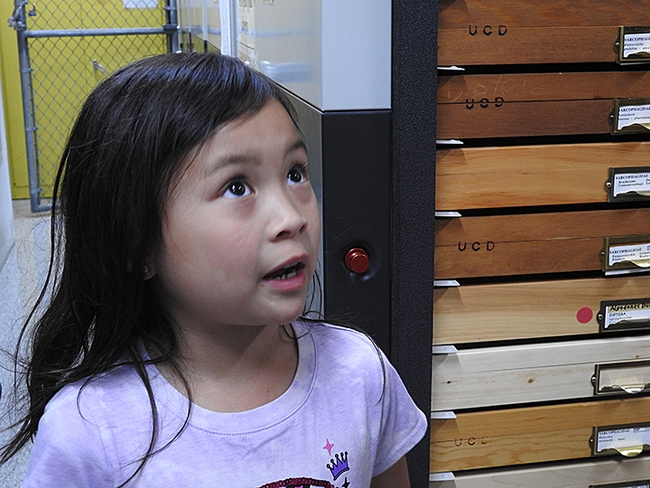
They crafted tadpole shrimp-themed hats and puppets using paper plates and googly eyes.
And they asked questions. Lots of questions.
It was all part of the UC Davis Bohart Museum of Entomology open house, themed "Bugs in Ag: What Is Eating Our Crops and What Is Eating Them?" The event, held May 28 and free and open to the public, drew dozens of visitors ranging from toddlers to senior citizens.
Cooperative Extension specialist Ian Grettenberger, an agricultural entomologist with the UC Davis Department of Entomology and Nematology faculty, and postdoctoral fellow Buddhi Achhami of the Grettenberger lab displayed pests of rice and alfalfa--as well as beneficial insects--and fielded questions. Bohart Museum volunteer and undergraduate student Omri Livneh assisted.
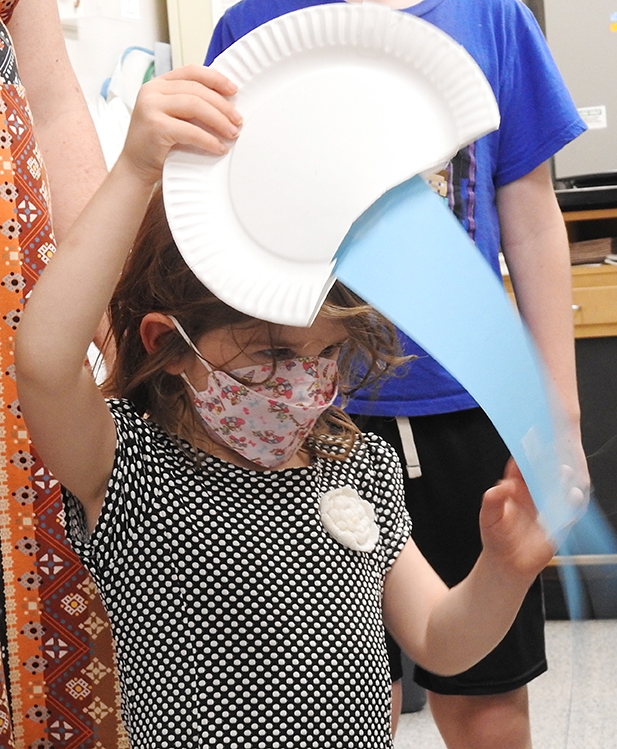
The Grettenberger lab showed KQED's Deep Look video, Tadpole Shrimp Are Coming For Your Rice. which includes Grettenberger's expertise.
"People enjoyed the event and learned about rice and agricultural pests, thanks to the Grettenberger lab special displays," commented Tabatha Yang, Bohart Museum's education and outreach coordinator who organized the event. She credited UC Davis doctoral student Grace Horne of the Emily Meineke lab with loaning additional USB scopes.
Entomologist Jeff Smith, who curates the Lepidoptera collection, showcased butterfly and moth specimens, including Atlas moths and monarchs. He marveled at the knowledge of "budding scientist" 6-year-old Riley Laurel of Vacaville, who arrived with her father, Julius, and brother, Aidan, 2. It was their first visit to the Bohart Museum.
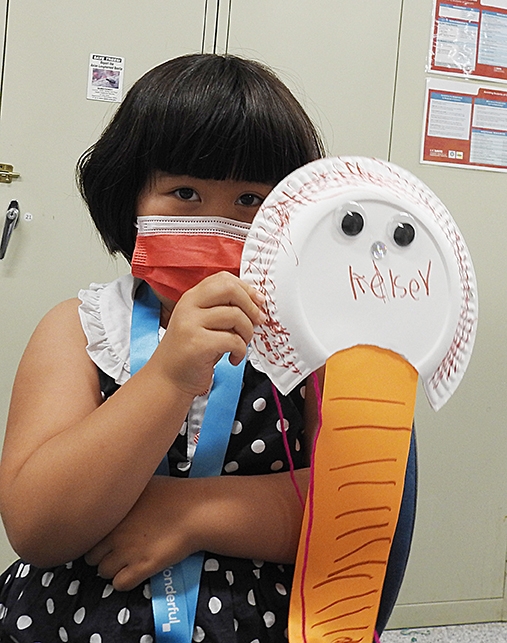
Bohart volunteer Barbara Heinsch, UC Davis graduate and environmental scientist and Chew staffed the arts and crafts table. Ellie Lindquist, 4, of Woodland and Kelsey Meng, 5, of Davis expressed delight in making tadpole shrimp-themed creations.
The Bohart Museum, directed by Lynn Kimsey, UC Davis distinguished professor of entomology, houses a global collection of eight million insect specimens; the petting zoo; and a year-around gift shop (also online), stocked with insect-themed gifts, such as t-shirts, hooded sweatshirts, posters, jewelry, books, puppets, candy and collecting equipment. It is located in Room 1124 of the Academic Surge Building, Crocker Lane.
The next open houses are scheduled June 25 and July 16. Like all of the Bohart Museum open houses, they are free and open to the public.
- Saturday, June 25, 1 to 4 p.m.
"8-Legged Wonders"
This open house is all about arachnids (think spiders) and will feature scientists from across the country. It is being held in collaboration with the American Arachnological Society's 2022 meeting, June 26-30m on the UC Davis campus and hosted by Jason Bond, the Evert and Marion Schlinger Endowed Chair in Insect Systematics, UC Davis Department of Entomology and Nematology, and associate dean, College of Agricultural and Environmental Sciences, and Joel Ledford, assistant professor of teaching, Department of Plant Biology, College of Biological Sciences. Arachnids also will be discussed at a public session on Tuesday, June 28, from 7:30 p.m. to 9 p.m. in California Hall. - Saturday, July 16, 1 to 4 p.m.
"Celebrating 50 years of the Dogface Butterfly: California's State Insect"
Scientists will join the public in celebrating the 50th anniversary of the California State Legislature' designation of the dogface butterfly, Zerene eurydice, as the state insect. Found only in California, the butterfly thrives in the 40-acre Shutamul Bear River Preserve near Auburn, Placer County. The preserve is part of the Placer Land Trust and is closed to the public except for specially arranged tours. At the July 16th open house, Folsom Lake College professor and Bohart scientist Fran Keller, and Bohart associate Greg Karofelas, a volunteer docent for the Placer Land Trust's dogface butterfly tours, will discuss the butterfly. Keller, who holds a doctorate in entomology from UC Davis, authored the 35-page children's book, The Story of the Dogface Butterfly (with photos by Keller and Kareofelas, and illustrations by former UC Davis student Laine Bauer.) Kareofelas and Keller also teamed to create a dogface butterfly poster of the male and female. Both the book and the poster are available online from the the Bohart Museum of Entomology gift shop. (Read more on how the butterfly became the state insect under the Ronald Reagan administration.)
Attached Images:
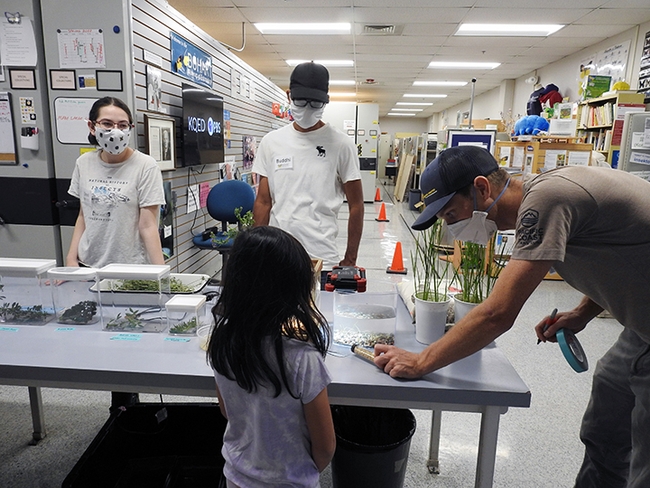
Cooperative Extension specialist Ian Grettenberger (far right) of the UC Davis Department of Entomology and Nematology leans over to talk to a visitor. In back are postdoctoral fellow Buddi Achhami (right) of the Grettenberger lab and UC Davis undergraduate student Omri Livneh. (Photo by Kathy Keatley Garvey)
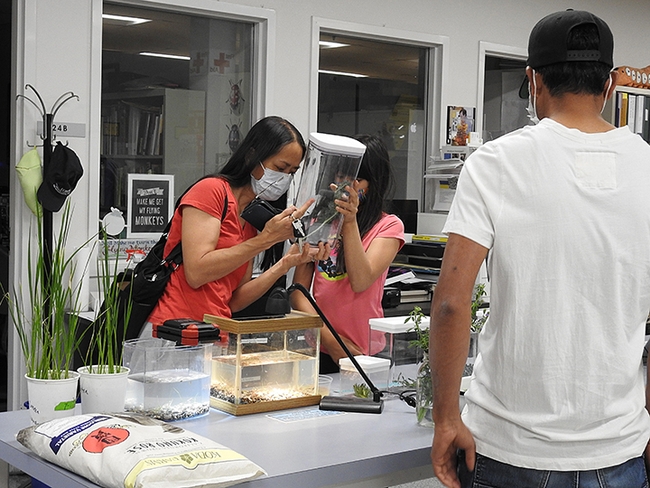
Visitors examine a Grettenberger lab display at the Bohart Museum open house. In the foreground is postdoctoral fellow Buddhi Achhami of the Grettenberger lab. (Photo by Kathy Keatley Garvey)
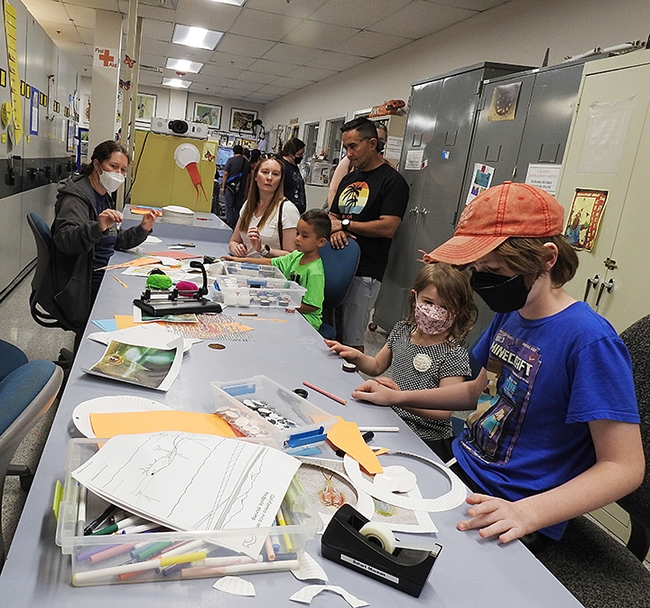
The arts and crafts table at the Bohart Museum featured making tadpole shrimp-themed hats and puppets. At the far left is Tabatha Yang, education and outreach coordinator. (Photo by Kathy Keatley Garvey)
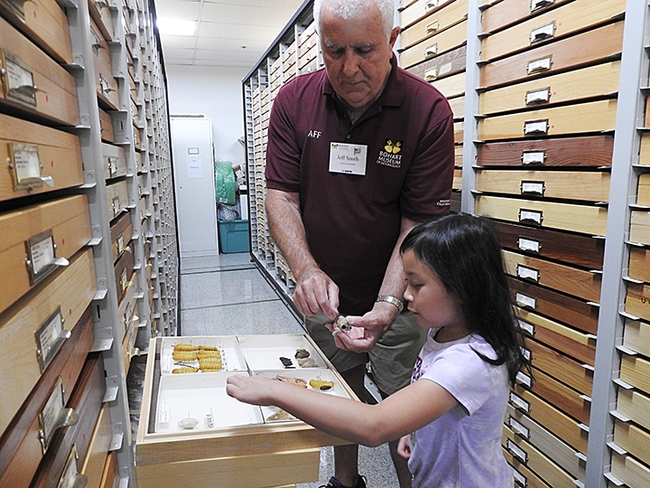
Entomologist Jeff Smith, curator of the Lepidoptera collection at the Bohart Museum, shows a display to Riley Laurel, 6, of Vacaville. (Photo by Kathy Keatley Garvey)
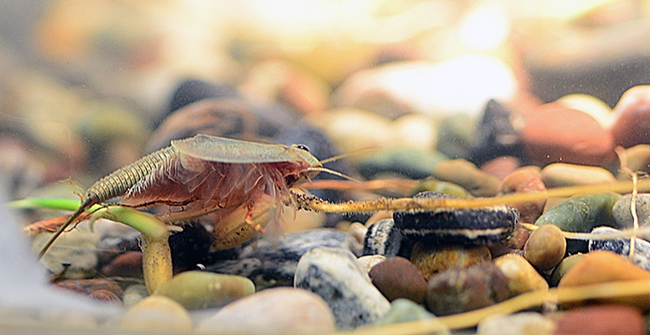
The tadpole shrimp is neither a tadpole nor a shrimp. It's a crustacean that's a pest of rice. (Photo by Kathy Keatley Garvey)
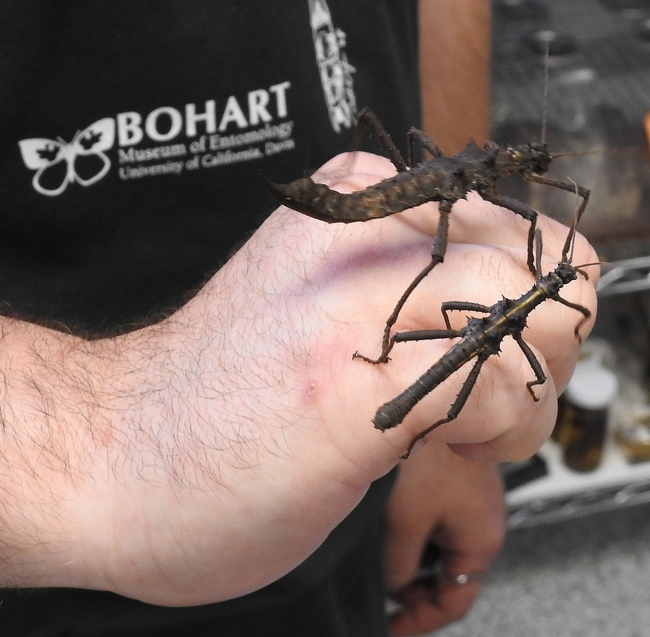
Two stick insects rest on the hand of Bohart lab assistant Brennen Dyer. (Photo by Kathy Keatley Garvey)